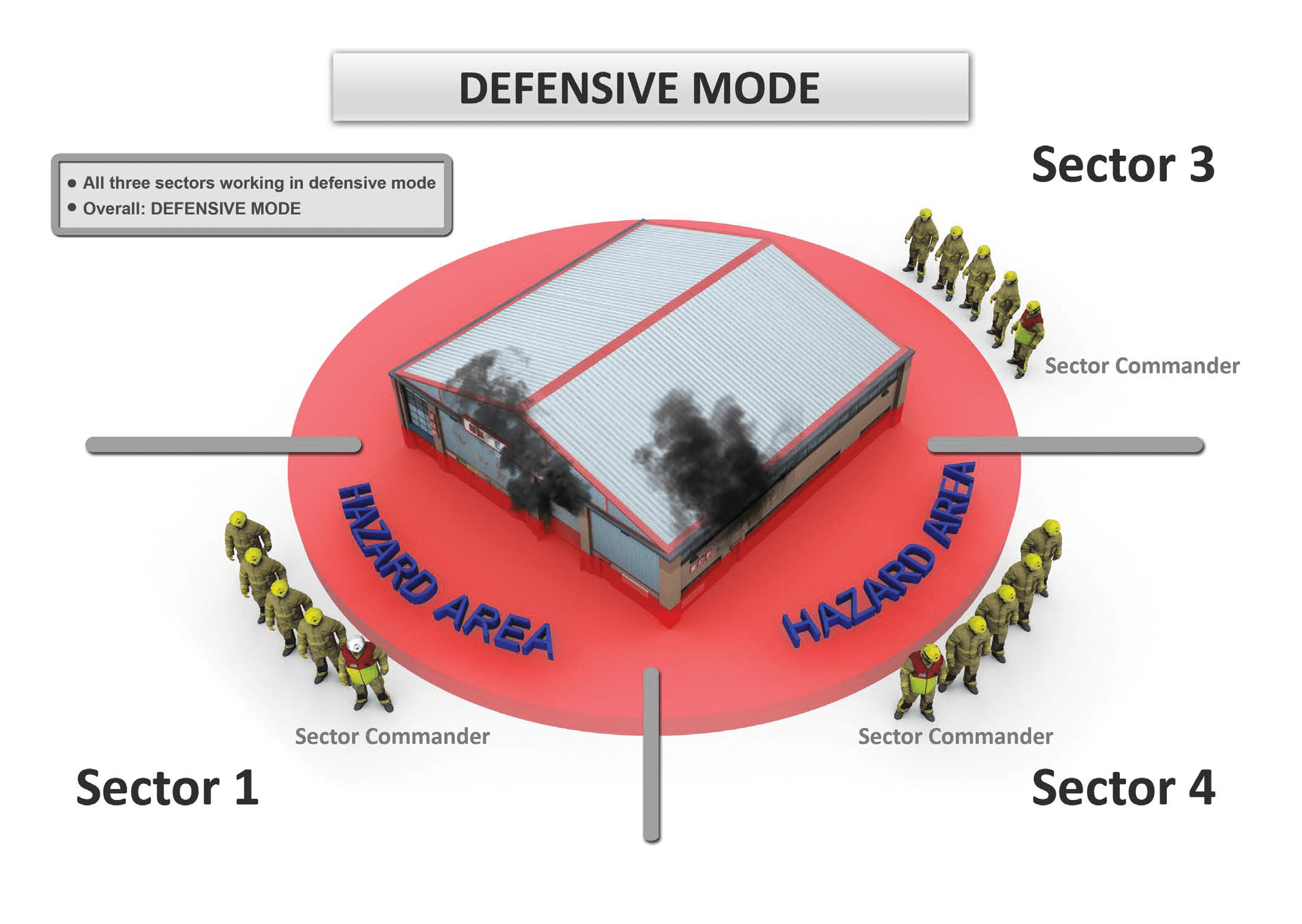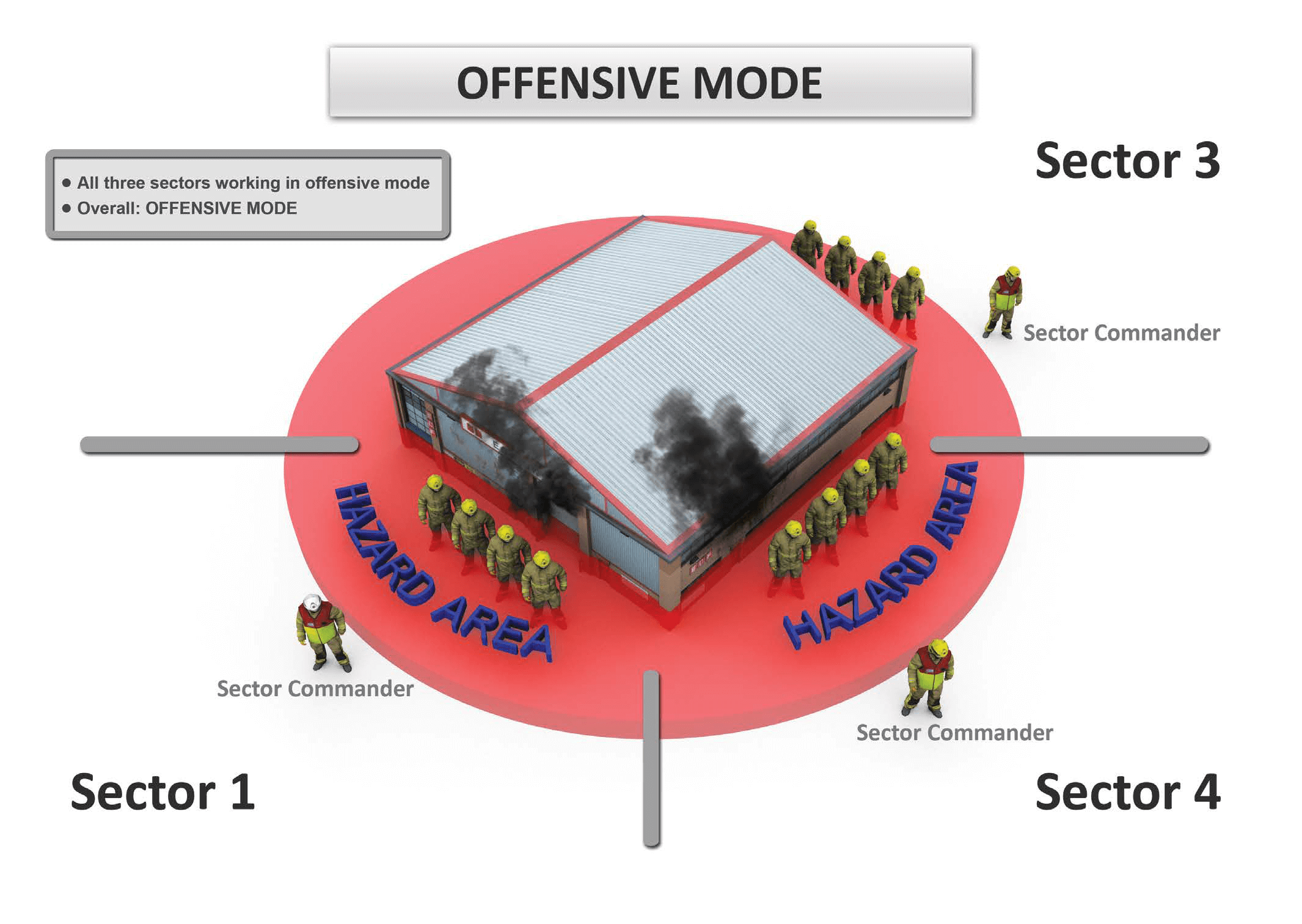
The communication of the tactical mode is a way of recording a decision by the incident commander on the completion of the risk assessment and determination of the incident plan.
It indicates the decision by the commander to deploy crews within the hazard area or not. All incidents require tactical modes to be declared at the earliest opportunity following arrival at an incident and at regular intervals thereafter. Where sectors are in place, a tactical mode for each sector is required.
The declaration of the tactical mode at any given point of the incident describes the current level of risk exposure to operational personnel.
There is no default tactical mode. The incident commander should decide their incident plan and associated operational tactics following their risk assessment and decision control process.
The selection of a tactical mode is a conscious decision underpinned by a clear rationale. This is key to assertive, effective and safe incident command delivered by competent commanders, and the avoidance of risk aversion and decision inertia.
This is where fire service personnel are working within the hazard area and exposed to greater risk, because the incident commander has decided it is appropriate following their risk assessment.
This mode may apply to an individual sector or to the whole incident when every sector is offensive.
Offensive mode is likely to be the common mode of operation. Examples include house fires, road traffic collisions and industrial premises where we might fight the fire, effect rescues or close down the plant.

This is where commanders deal with an incident from a defensive position. In defensive mode, the identified risks are unacceptable and outweigh the potential benefits. No matter how many extra control measures could be put in place at that particular time, the risks remain too great to commit crews into the hazard area.
Defensive mode indicates that no crews are working in the hazard area. It does not indicate the no operational activity is taking place.

When the incident has been divided into sectors, the incident commander remains responsible for the tactical mode at all times. There will be occasions when an operations commander has been appointed. Whilst they may determine or approve a change in tactical mode, the incident commander still retains overall responsibility.
When more than one sector is in use: